
# 4415 - 2009 44c Hawaii Statehood
Hawaii Statehood
Issue Date: August 21, 2009
City: Honolulu, HI
In the tropical Pacific Ocean, about 2,500 miles from the continental United States, canoes and surfboards often dot the Hawaiian coastline.
Hawaii’s earliest settlers arrived there aboard double-hulled canoes. The islands’ Polynesian inhabitants used the boats for fishing, traveling, and exploration. The crafting of canoes included a spiritual ceremony with prayers and the selection of the wood for the boat, usually the koa tree. The boats were prized for their speed. “One man could paddle a single canoe faster than a boat’s crew could row a whaleboat,” said visitor William Ellis in 1823.
Long before the first Europeans set their eyes on Hawaii’s exotic, sun-filled beaches, the island’s Polynesian settlers practiced surfing as a spiritual art. The natives called it he’e nalu, or “wave sliding.” They asked the kahuna, or priest, to pray for strength and a good surf.
Members of Hawaii’s ruling class used the best beaches and boards. The commoners were not allowed on the same beaches, but could raise their rank in society by showing off surfing talents. Although European settlers in the 1800s discouraged Polynesian culture, surfing regained popularity in the 20th century as a recreational sport for all.
Duke Paoa Kahinu Mokoe Hulikohola Kahanamoku (also known as “The Duke” and “The Big Kahuna”) was born on August 24, 1890, in Haleʻākala, Honolulu, Kingdom of Hawaii. Duke was a record-setting Olympic swimmer who helped popularize surfing outside of Hawaii. Duke’s family was related to the Kamehamehas, who’d led Hawaii for several years – his family was considered lower-ranking nobles. When he was three, his family moved to Kālia, Waikiki, to be closer to his extended family. He grew up with five brothers, three sisters, and 31 cousins. Duke attended school there but didn’t graduate, instead leaving school to help support his family. Duke spent much of his spare time on the beach, surfing and swimming. Surfing was an ancient Polynesian sport that had declined in most of the Pacific by 1900. “He’enalu” (wave-sliding) was still practiced in Waikiki where Duke grew up though. He was a strong swimmer. In fact, in August 1911, he reportedly set a new 100-yard freestyle world record of 55.4 seconds, 4.6 seconds better than the existing, officially recognized world record. Duke also broke the 200-yard and 50-yard records, but the Amateur Athletic Union didn’t believe him and didn’t give him credit for these accomplishments for many years. In spite of this snub, Duke easily qualified for the US Olympic swimming team in 1912, the first of five trips he’d make to the Olympics. In his first Olympics, in 1912, he almost slept through the 100-meter freestyle. He persuaded officials to delay the race long enough for him to put a swimsuit on, then went on to break the Olympic record and to win the gold medal. Duke won two more gold medals at Antwerp in the 1920 games. He and his brother Samuel stood together on the podium in Paris in 1924, where Duke won the silver and Samuel won the bronze in the 100-meter freestyle event. Duke was also on the US water polo team in the 1932 Olympics but did not participate in a game. In between his Olympic appearances and after retiring from them, Duke traveled the world for swimming exhibitions. While on these trips he also put on surfing exhibitions, which helped to popularize the sport. Previously, it wasn’t well known outside of Hawaii. Duke brought surfing to California in 1912 and lived there for several years. During his time in California, Duke worked as a background actor and character actor in several Hollywood films. Also, while living in California, Duke helped save eight fishermen from drowning in 1925. Their boat had capsized in heavy surf and Duke used his surfboard to quickly ferry the men to shore and return to the ship to rescue more men. The local police chief said it was “the most superhuman surfboard rescue act the world has ever seen.” This event also led American lifeguards to start using surfboards in their rescues. Duke returned to Hawaii and from 1932 to 1961 served as sheriff of Honolulu. He was the first person inducted into the Swimming and Surfing Halls of Fame. Duke has also been inducted into the US Olympic Hall of Fame and the Duke Kahanamoku Invitational Surfing Championships were named in his honor.Happy Birthday, Duke Kahanamoku
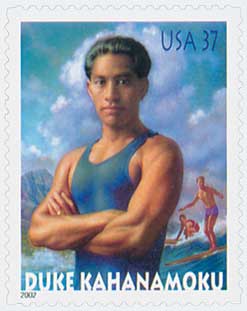
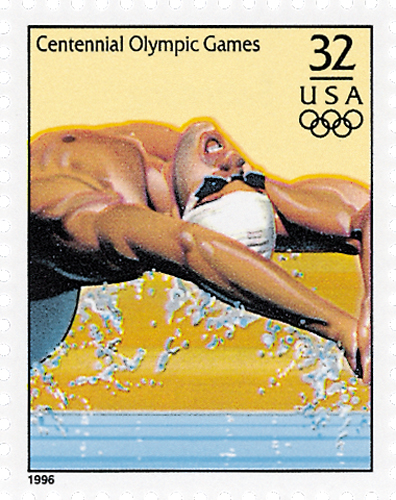
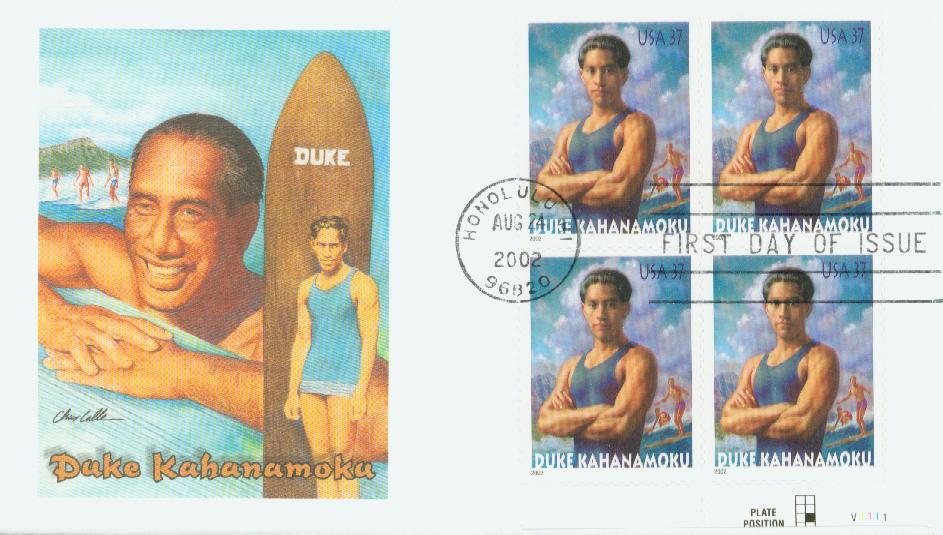
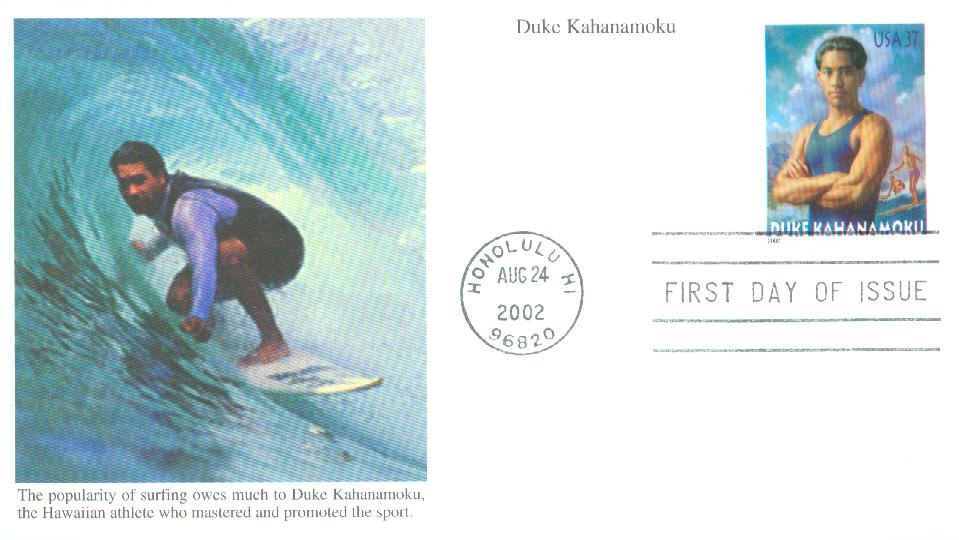
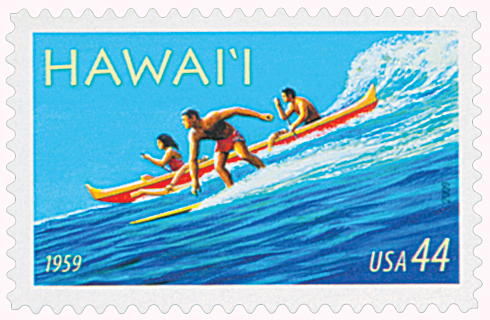
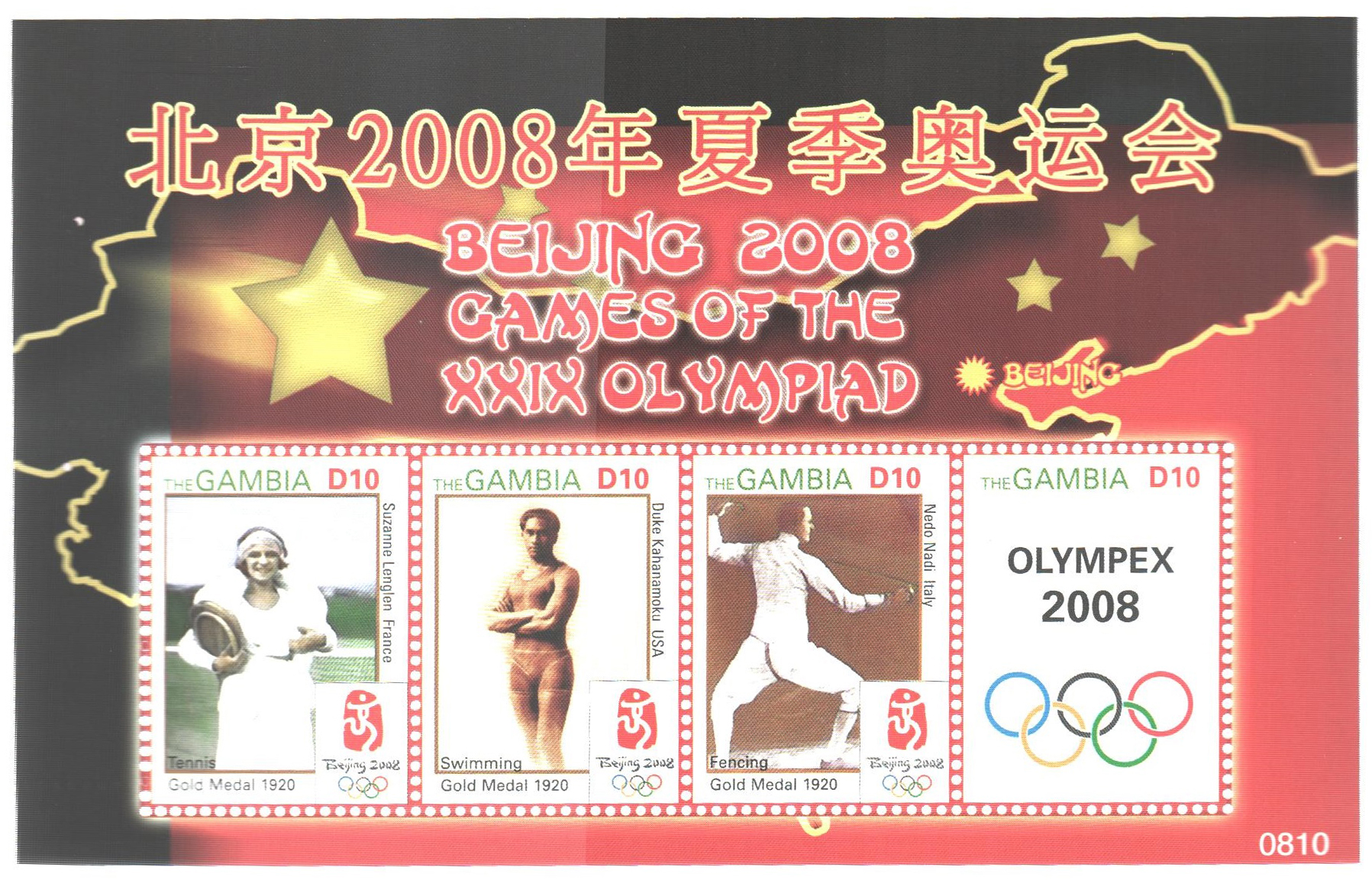
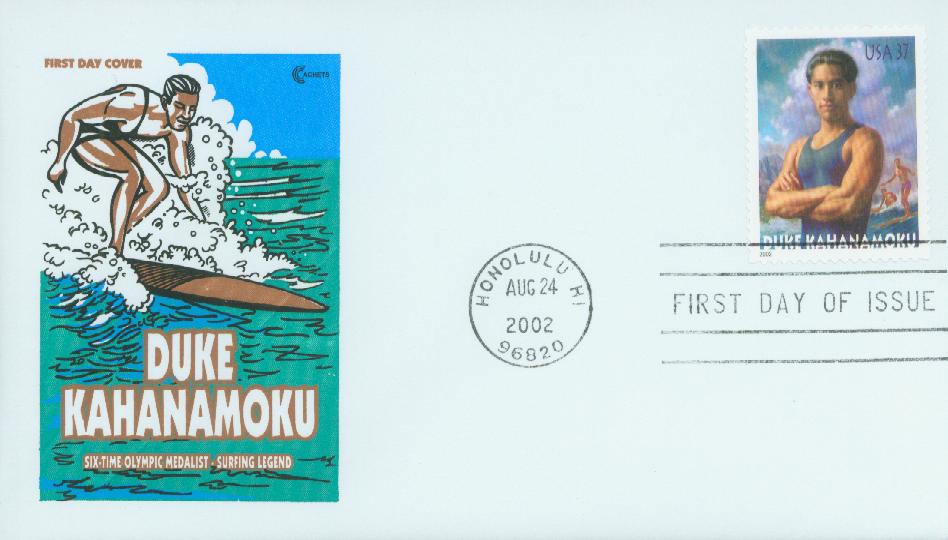
Duke died on January 22, 1968, of a heart attack. His ashes were scattered into the ocean.
Hawaii Statehood
Issue Date: August 21, 2009
City: Honolulu, HI
In the tropical Pacific Ocean, about 2,500 miles from the continental United States, canoes and surfboards often dot the Hawaiian coastline.
Hawaii’s earliest settlers arrived there aboard double-hulled canoes. The islands’ Polynesian inhabitants used the boats for fishing, traveling, and exploration. The crafting of canoes included a spiritual ceremony with prayers and the selection of the wood for the boat, usually the koa tree. The boats were prized for their speed. “One man could paddle a single canoe faster than a boat’s crew could row a whaleboat,” said visitor William Ellis in 1823.
Long before the first Europeans set their eyes on Hawaii’s exotic, sun-filled beaches, the island’s Polynesian settlers practiced surfing as a spiritual art. The natives called it he’e nalu, or “wave sliding.” They asked the kahuna, or priest, to pray for strength and a good surf.
Members of Hawaii’s ruling class used the best beaches and boards. The commoners were not allowed on the same beaches, but could raise their rank in society by showing off surfing talents. Although European settlers in the 1800s discouraged Polynesian culture, surfing regained popularity in the 20th century as a recreational sport for all.
Duke Paoa Kahinu Mokoe Hulikohola Kahanamoku (also known as “The Duke” and “The Big Kahuna”) was born on August 24, 1890, in Haleʻākala, Honolulu, Kingdom of Hawaii. Duke was a record-setting Olympic swimmer who helped popularize surfing outside of Hawaii. Duke’s family was related to the Kamehamehas, who’d led Hawaii for several years – his family was considered lower-ranking nobles. When he was three, his family moved to Kālia, Waikiki, to be closer to his extended family. He grew up with five brothers, three sisters, and 31 cousins. Duke attended school there but didn’t graduate, instead leaving school to help support his family. Duke spent much of his spare time on the beach, surfing and swimming. Surfing was an ancient Polynesian sport that had declined in most of the Pacific by 1900. “He’enalu” (wave-sliding) was still practiced in Waikiki where Duke grew up though. He was a strong swimmer. In fact, in August 1911, he reportedly set a new 100-yard freestyle world record of 55.4 seconds, 4.6 seconds better than the existing, officially recognized world record. Duke also broke the 200-yard and 50-yard records, but the Amateur Athletic Union didn’t believe him and didn’t give him credit for these accomplishments for many years. In spite of this snub, Duke easily qualified for the US Olympic swimming team in 1912, the first of five trips he’d make to the Olympics. In his first Olympics, in 1912, he almost slept through the 100-meter freestyle. He persuaded officials to delay the race long enough for him to put a swimsuit on, then went on to break the Olympic record and to win the gold medal. Duke won two more gold medals at Antwerp in the 1920 games. He and his brother Samuel stood together on the podium in Paris in 1924, where Duke won the silver and Samuel won the bronze in the 100-meter freestyle event. Duke was also on the US water polo team in the 1932 Olympics but did not participate in a game. In between his Olympic appearances and after retiring from them, Duke traveled the world for swimming exhibitions. While on these trips he also put on surfing exhibitions, which helped to popularize the sport. Previously, it wasn’t well known outside of Hawaii. Duke brought surfing to California in 1912 and lived there for several years. During his time in California, Duke worked as a background actor and character actor in several Hollywood films. Also, while living in California, Duke helped save eight fishermen from drowning in 1925. Their boat had capsized in heavy surf and Duke used his surfboard to quickly ferry the men to shore and return to the ship to rescue more men. The local police chief said it was “the most superhuman surfboard rescue act the world has ever seen.” This event also led American lifeguards to start using surfboards in their rescues. Duke returned to Hawaii and from 1932 to 1961 served as sheriff of Honolulu. He was the first person inducted into the Swimming and Surfing Halls of Fame. Duke has also been inducted into the US Olympic Hall of Fame and the Duke Kahanamoku Invitational Surfing Championships were named in his honor.Happy Birthday, Duke Kahanamoku







Duke died on January 22, 1968, of a heart attack. His ashes were scattered into the ocean.














